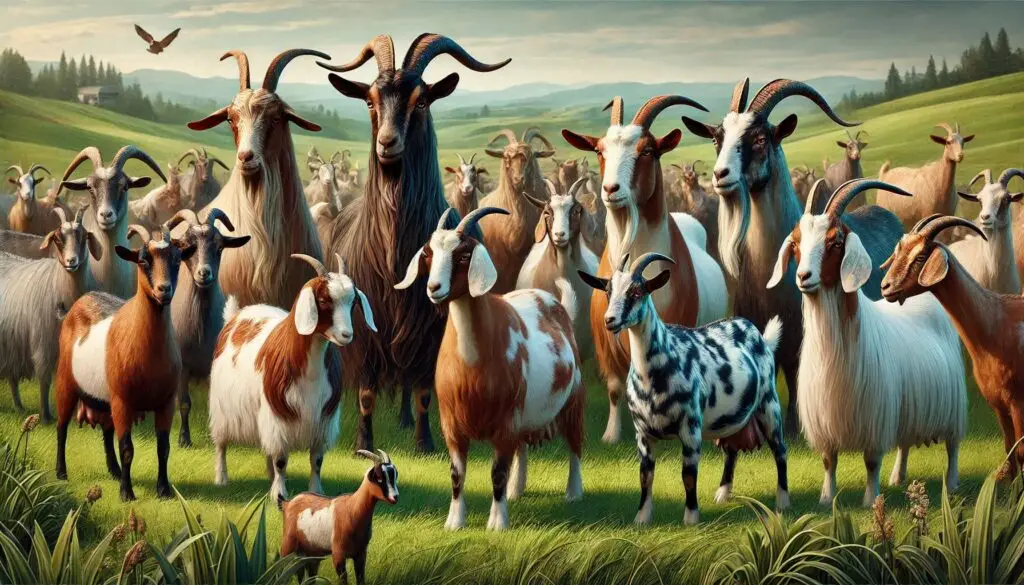Understanding Buffalo Breeds

Introduction to Buffalo Breeds
Buffaloes belong to the Bovidae family. They are primarily classified into two main types: river buffalo and swamp buffalo. River buffaloes are known for their high milk production. Swamp buffaloes are often used as draught animals. Each breed has unique traits that suit specific purposes.
Importance of Buffalo in Agriculture
Buffaloes play a crucial role in rural economies. They help farmers by providing milk and meat. Additionally, they assist in farming activities through draught work. According to the Food and Agriculture Organization (FAO), buffaloes contribute significantly to food security in many countries (FAO – Buffalo Production).
Major Breeds of Buffalo
1. Murrah
Characteristics
Murrah buffaloes originate from Haryana and Punjab in India. They have a jet black color with white markings on their face and legs. Their horns are tightly curved, adding to their distinctive appearance.
Milk Production
Murrah buffaloes are highly valued for their milk production. On average, they yield around 1752 kg per lactation with a fat content of about 7%. This makes them an excellent choice for dairy farming.
Uses
Farmers primarily raise Murrah buffaloes for milk production. The bulls are also used to upgrade non-descript buffalo stock.
2. Nili-Ravi
Characteristics
Nili-Ravi buffaloes come from Pakistan. They typically have a black or brown coat and are medium-sized animals.
Milk Production
These buffaloes are known for their high milk yields, averaging up to 1600 kg per lactation. Their milk is rich in fat content, making it suitable for various dairy products.
Uses
Nili-Ravi buffaloes are primarily used for milk production in dairy farms across Pakistan and India.
3. Jaffarabadi
Characteristics
Jaffarabadi buffaloes hail from Gujarat, India. They are large animals with a distinctive hump on their back and a black coat.
Milk Production
These buffaloes can produce between 1500 to 2000 kg of milk per lactation on average. Their milk is also rich in butterfat.
Uses
Jaffarabadi buffaloes serve both dairy and draught purposes. Farmers appreciate them for their strength and endurance.
4. Surti
Characteristics
Surti buffaloes are found in Gujarat as well. They have a medium size with sickle-shaped horns.
Milk Production
Surti buffaloes yield between 1500 to 2000 kg of milk per lactation, making them valuable dairy animals.
Uses
Farmers mainly raise Surti buffaloes for milk production due to their good yield and quality.
5. Bhadawari
Characteristics
Bhadawari buffaloes originate from Uttar Pradesh and Madhya Pradesh in India. They have a blackish copper color with stout legs.
Milk Production
On average, Bhadawari buffaloes produce around 1294 kg of milk per lactation with fat content varying from 6% to 12.8%.
Uses
These buffaloes are known for their ability to convert coarse feed into butterfat efficiently, making them ideal for dairy farming.
6. Kalahandi
Characteristics
Kalahandi buffaloes come from Odisha, India. They have a coat color that ranges from black to grey with flat foreheads adorned with golden hairs.
Milk Production
Kalahandi buffaloes have moderate yields ranging from 680 to 912 kg per lactation.
Uses
Farmers use Kalahandi buffaloes for both milk and draught purposes due to their strength.
Additional Breeds
Other notable breeds include:
- Banni: Known for endurance and draught capabilities.
- Chhattisgarhi: Primarily used for draught and meat with an average yield of about 1180 kg.
The Role of Buffalo in Sustainable Agriculture
Buffalo farming supports sustainable agriculture practices. These animals can thrive on low-quality forage that other livestock cannot digest effectively (Sustainable Agriculture). This ability helps farmers utilize resources efficiently while contributing to environmental sustainability.
Nutritional Benefits of Buffalo Milk
Buffalo milk is rich in nutrients compared to cow’s milk (Nutritional Benefits of Buffalo Milk). It has higher fat content, which makes it creamier and ideal for making products like cheese and yogurt. The higher calcium content also supports bone health.
Economic Impact of Buffalo Farming
Buffalo farming contributes significantly to rural economies (Economic Importance of Buffalo). It provides livelihoods for millions of farmers worldwide. The demand for buffalo milk has been rising due to its nutritional benefits. This trend encourages farmers to invest more in breeding better-performing breeds.
Challenges Faced by Buffalo Farmers
While there are many benefits to raising buffalo, farmers face challenges too:
Disease Management
Buffalo can be susceptible to various diseases like foot-and-mouth disease (FMD) and mastitis (Disease Management in Buffalo). Proper vaccination programs are essential.
Market Access
Farmers often struggle with access to markets where they can sell their products at fair prices (Market Access Strategies). Building cooperatives can help improve market access.
Future Prospects of Buffalo Farming
The future looks promising for buffalo farming due to increasing demand for dairy products globally (Future Trends in Dairy Farming). Innovations in breeding techniques can enhance productivity further (Genetic Improvement Strategies).
Genetic Improvement
Selective breeding programs can lead to improved traits such as higher milk yield and disease resistance (Genetic Improvement Strategies).
Technological Advancements
Technology plays a vital role in modernizing buffalo farming practices (Technological Advancements in Farming). From better feeding systems to health monitoring tools, technology can improve efficiency.
Conclusion
Understanding the various breeds of buffalo is essential for farmers looking to optimize their livestock management practices. Each breed offers unique advantages based on its characteristics and uses. By investing in the right breed and adopting sustainable practices, farmers can enhance productivity while contributing positively to rural economies.
In summary, whether you are interested in dairy production or using buffalo as draught animals, knowing the different breeds will help you make informed decisions that benefit your agricultural endeavors.
More from Genetics and Animal Breeding:
The Full-Sib Method in Livestock Breeding






I don’t think the title of your article matches the content lol. Just kidding, mainly because I had some doubts after reading the article.